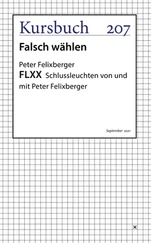MEMPHIS
JANUARY 14
11:35 P.M.
WITHIN MINUTES OF ELIZABETH HOLLERAN AND Atkins’ arrival at the earthquake center, Guy Thompson had started an analysis of the seismic data they’d brought back from the epicenter near Blytheville. Two hours later, Thompson’s team of USGS computer specialists had completed some preliminary modeling on deformation—how much the earth’s crust had been pushed up or down by the tremendous quakes and their aftershocks.
The GPS data Atkins and Holleran had retrieved from the building on the city’s riverfront was combined with several other GPS sites in the Mississippi Valley. Two of them—one near Louisville, the other just north of Jackson, Mississippi—were able to transmit their raw data by radio signal to receiver towers that had survived the quake. This information, along with radar interferometry readings taken by the SIDUSS satellite system, had been relayed to the USGS Earthquake Information Center in Boulder, then back to Thompson’s computer through a satellite hookup.
A little before midnight, the weary seismologists gathered in the library annex building. There were ten people, including Atkins and Holleran. A gas-driven emergency generator provided the electricity. Paul Weston, chairman of the Seismic Safety Commission, ran the session. He was accompanied by his two assistants, Stan Marshal and Mark Wren. Whenever he saw him, Atkins was struck by Marshal’s size. The guy looked like a professional boxer who’d hit fifty and spread out. Not a geologist. He had a blocky, heavy build that stretched his jacket at the seams. He never smiled. Never.
Wren was younger, easygoing. He was always carrying a laptop.
Atkins wasn’t pleased to see Weston, who was always fidgeting with his clothes, pulling lint from his trousers, or trying to straighten a crease. His hands were always moving, always fluttering around his clothing. It made Atkins nervous just to watch him. He didn’t trust the man and wanted to talk to him about the cracks at Kentucky Dam. Based on what he’d seen inside the wall of the dam with Holleran, Weston had been deliberately misleading about their size and severity during that public meeting in Mayfield. Atkins was eager to pursue the matter, but knew this wasn’t the time or place.
Guy Thompson was the first to speak. By then he’d been working more than fifty hours with very little sleep. He’d changed into a fresh Western shirt and jeans. This time he wore a buckskin shirt with tassels that hung from the sleeves. His face was haggard. He hadn’t shaved and was rapidly growing a thick black beard that matched his long, jet-black hair. In the few hours since Atkins had given him the seismic data he and Holleran had collected, Thompson’s whole demeanor had changed. His engaging smile and forceful voice had vanished. Usually the picture of buoyant self-confidence, he was unusually subdued.
As soon as Thompson cleared his throat and began to talk, Atkins realized what was wrong with him: the man was scared.
“We’ll go over the GPS and interferometry data first,” Thompson said. He started with a matter-of-fact description of how the data were transmitted.
“We began downloading at 4:00 P.M. local time. The GPS data was from the Block II constellation. The interferometry images came from SIDUSS.” The Synthetic Aperture Radar dual satellite system provided real-time images from two satellites operated in tandem in the same orbit.
“The data were transmitted on two L-band frequencies. The Y-code was in effect for antispoofing control,” Thompson said, explaining that antispoofing guarded against any fake transmissions of satellite data. The use was justified, he said, based on the extreme importance of the information.
Weston interrupted. “Let’s get to the summary, please. What kind of deformation do we have?”
Atkins sensed that Thompson was proceeding slowly for a reason.
“The GPS Master Control Station at Falcon Air Force Base in Colorado affirms the transmission,” Thompson said, ignoring Weston. “We’re concerned with two orbital planes, both focused on North America, specifically on the Mississippi River Valley.” He paused to check some notes. It looked to Atkins as though he was holding on to the desk for dear life.
“You asked about deformation. The surface deformation is phenomenal. Based on GPS data of six months ago, the satellite measurements show the ground was pushed up as much as seven feet across wide areas in the fault zone.”
Atkins was dumbfounded. There were murmurs of disbelief, gasps. That kind of uplift was unheard of. During the Armenian quake in 1988, uplifts of just over two feet had occurred across a 200-square-mile area and that was considered severe.
“With a deformation like that, you’ve got to wonder how much energy is still locked in the fault system,” Holleran said.
That had always been the key question for Atkins. They were finally getting at the answer. The deformation was staggering. For the first time since the 8.4 earthquake, he realized that Holleran had been totally right in wondering whether they were experiencing a pattern of foreshocks, not aftershocks. He looked at her and caught her glance, a nervous half smile. They had to consider the possibility they were well into a cycle leading up to yet another powerful earthquake.
“It’s quite possible there’s very little energy left in the ground,” Weston said, jotting notes on a piece of graph paper. “The elasticity in the rock may actually have decreased.”
“And deformation isn’t a foolproof indicator that we’ve got huge amounts of strain energy building up,” said Stan Marshal.
“But how do you explain the phenomenal number of aftershocks we’re having?” Holleran said. Like everyone else in the room, she knew the real test would come with the next set of GPS and interferometry readings. If they showed any additional rise in topography, it would mean seismic energy was still loading up in the fault.
“After a great earthquake, that’s entirely routine,” Weston said. “The aftershocks lasted for weeks after the Northridge quake.”
“That was a magnitude 6.7 event. This one was 8.4,” Holleran said. “I don’t think you can compare the two. It’s like comparing a one-story building with a 350-story skyscraper.”
“We’re getting ahead of ourselves,” Thompson said. “The deformation zone covers roughly 340,000 square miles. It runs east on a line extending from Blytheville, Arkansas, into portions of Kentucky, Tennessee, extreme southern Missouri, Illinois, and Ohio.” He darkened the lights and turned on a laptop, which projected a map of the Mississippi Valley on a movie screen.
“We’ve done some two-dimensional modeling of the deformed sections of the crust,” he said.
The images were overlaid on the map. The first in the series showed the epicenter at Blytheville, which appeared as a pronounced bulge.
“You can see the asymmetric dome-shaped uplift there,” said Thompson. The sharply defined upthrust of the earth spread out around the epicenter for a hundred-mile radius.
Atkins suspected he had another bombshell to announce.
“We’ve got a lot more to consider here,” Thompson went on, still taking it slowly and methodically. “The seismic data John and Doctor Holleran brought back from Blytheville corresponds with other reporting stations. We know the quake opened another fault in the New Madrid Seismic Zone. We’re still analyzing it, but this branch appears to run from just north of Caruthersville, Missouri, into northeast Tennessee and then up into Kentucky. It covers roughly 170 miles.”
If Thompson’s data held up, it meant the New Madrid Seismic Zone had effectively doubled in size. No one spoke. Everyone was too shocked to respond.
Читать дальше












